A winter challenge for body and mind
My journey began on a cold, rainy Monday in January 2024. My home of Stuttgart is supposedly a ‘model region for sustainable mobility’, but a torrent of cancellations and delays meant I only caught my connection in Strasbourg by the skin of my teeth. Despite all, both me and my bike arrived safely to the start of my trip in the oldest city of France: the ancient Greek port city of Marseille.
My only aim was to reach Santiago de Compostela. I had an initial schedule to arrive in ten days. What would come after? I didn’t know. In the end, I would ride the whole Portuguese coastline, cross into Africa, and return via Catalonia across the Pyrenees again. When I finally got back home after 73 days, the trip had become my longest bike journey yet – my 13th overall. More of that later – let’s take it from the beginning.
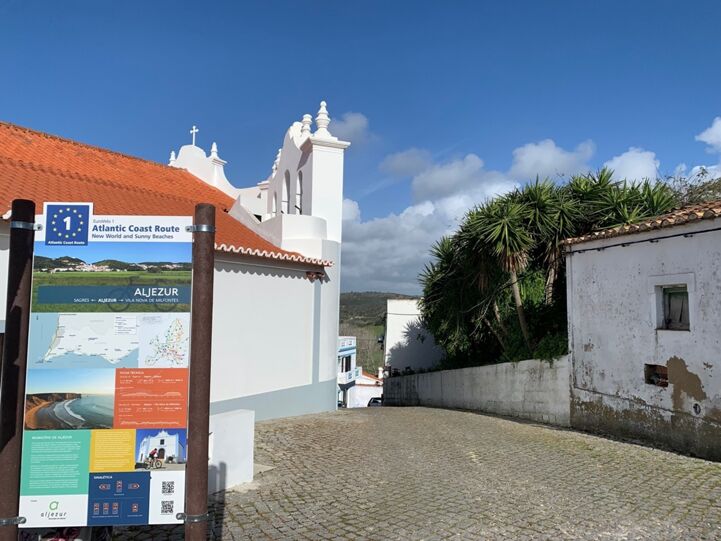
Back on the saddle
The first day was tough. I had cycled from Germany to Marseille two times before, but this was my first time leaving this quintessentially Mediterranean port city. The weather was great, but the bike lanes quickly disappeared, and I found myself surrounded by trucks and SUVs. Nevertheless, I made it to Arles, found a place to stay and remembered van Gogh whilst gazing at the scenic sunset from the hotel room.
The next day I realised I was not prepared for such a journey. I hadn’t cycled at all in over six months. Nevertheless, I pedaled on. Reaching Santiago was a longtime dream, not solely for spiritual reasons. The Galician capital had an air of adventure in my mind.
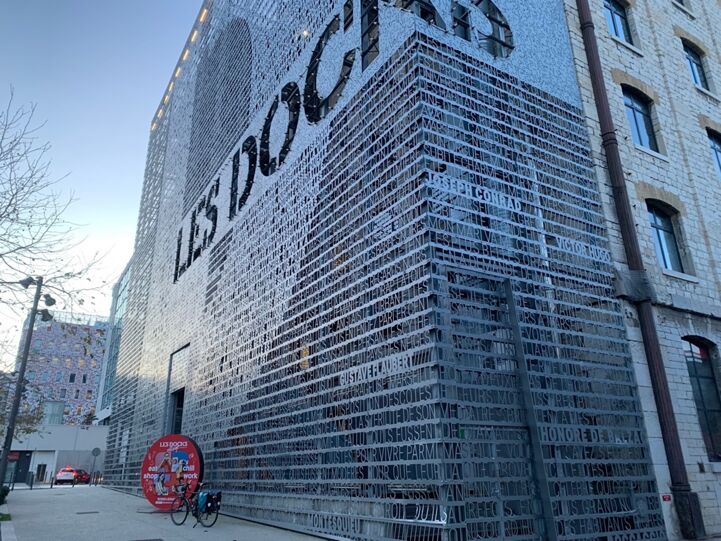
My legs were sore, but my bike was in good shape as I pedaled through the Camargue and along the Mediterranean coast to cities like Sète and Béziers. Soon, the Pyrenees came into view, and I started to imagine what the other side would be like.
It took a while before I saw my first EuroVelo sign, but tourist routes like the Canal du Midi guided me, along with GR hiking trails like number 78, heading towards Carcassonne, Lourdes, and Saint-Jean-Pied-de-Port. Compared to my summer trips, cycling in early January was difficult due to cold temperatures and merely eight hours of daylight. Sometimes I ate lunch while cycling to keep warm and to make the most of the day.
Spain greeted me with friendly people and breathtaking landscapes. I took a week-long break in Pamplona to hike the Camino del Norte with my friend. During this time, I thought about the pilgrims I had met in a hostel that used to be a church that continued walking the Camino Francés. Following the advice, “The path is the goal,” I tried to stick to the official Camino signs – yellow arrows or the Pilgrim’s scallop. My bike faced some tough conditions as the weather worsened and the terrain became more challenging. There were days when my average speed was just 11 or 12 kilometers per hour as I pushed my bike through the muddy paths and over sticks and stones.
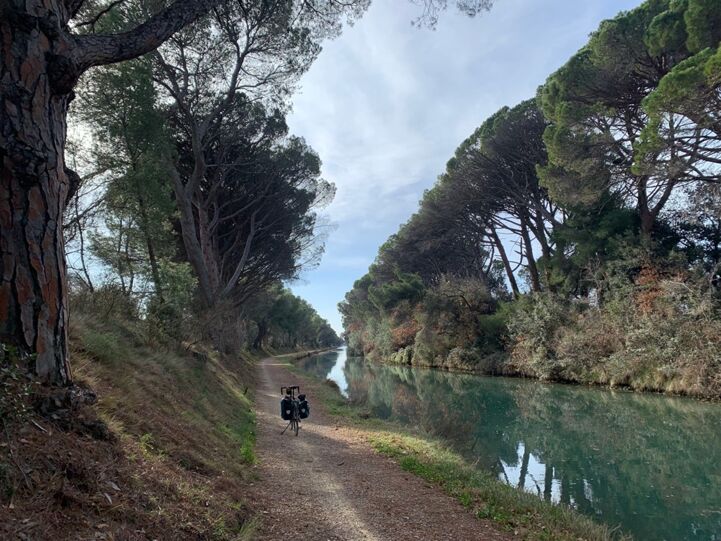
After reaching Santiago, I pushed on
In Portugal, the GPX tracks from the official EuroVelo website helped me to navigate through areas without proper signage. At times there were nice spots to rest with benches, trees or rooftops for shadow, wells with drinkable water and bins – and even more luxurious locations with additional power outlets to recharge a phone or an electric bike. Overall, Portugal with its famous beaches was a wonderful country to explore by bicycle. For sure there were some hairy moments as drivers passed too close or dogs were chasing me. Yet most of the times the “Ecovias” – infrastructure that connects urban areas on a local and regional level – led me through beautiful landscape and quite passages with little traffic along the Atlantic coastline. Portugal’s extensive 1,86 million kilometers of cycling infrastructure made it easy to explore the country.
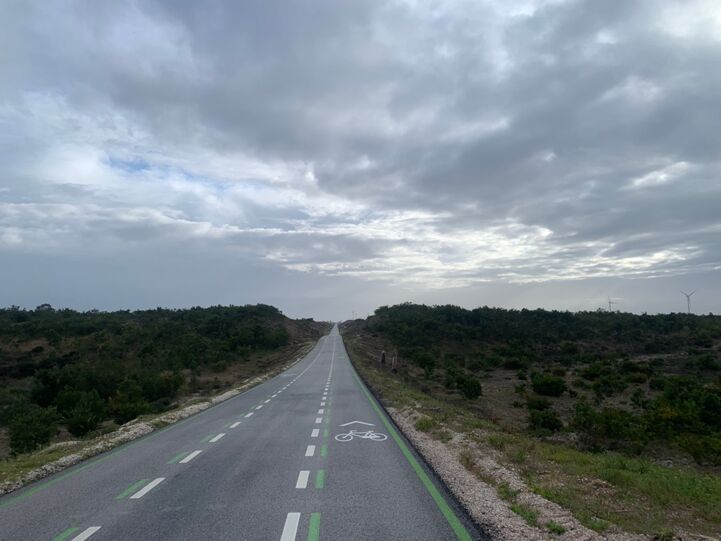
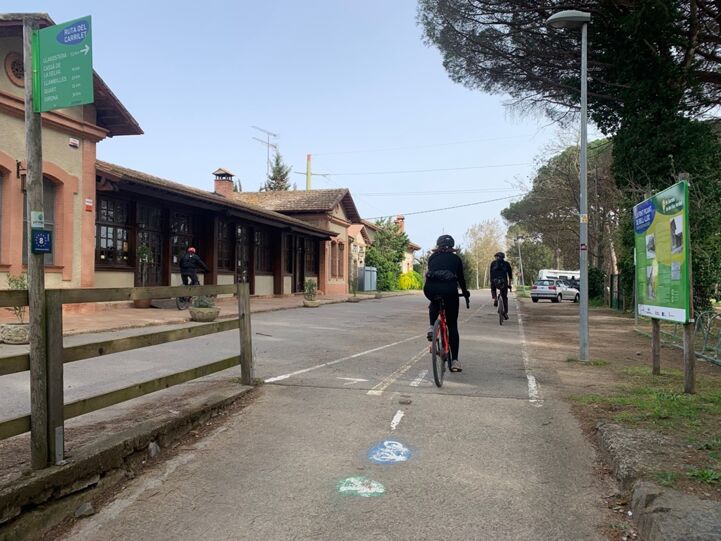
, were perfect for cycling through the countryside.
By the time I reached France again, cycling along the Canal du Midi after Perpignan and Narbonne, I reflected on my journey. It was 1 April, the season had changed, and flowers were blooming. It felt like spring had arrived. People of all ages enjoyed the public spaces without contributing to the noise or particle pollution of cars. I realised that in this common shared landscape I was no longer just a traveler; I was part of the social fabric. The calm neighborhoods with spaces and recreational value not only benefitted me as a traveler, but all generations, locals and tourists alike.
What did this trip teach me and how did it change me?
There were three key moments when I nearly gave up but decided to persevere. The first was right after leaving the picturesque city of Sète. The whole idea seemed too ambitious, and I doubted whether I could really complete such a journey. That night, I met a cyclist who had just arrived from Tangier after a three-month adventure in Morocco. He lived in the same area where I grew up, and we talked about my doubts and fears. His stories of far-off places inspired me and helped me believe that I, too, could embark on an adventure.
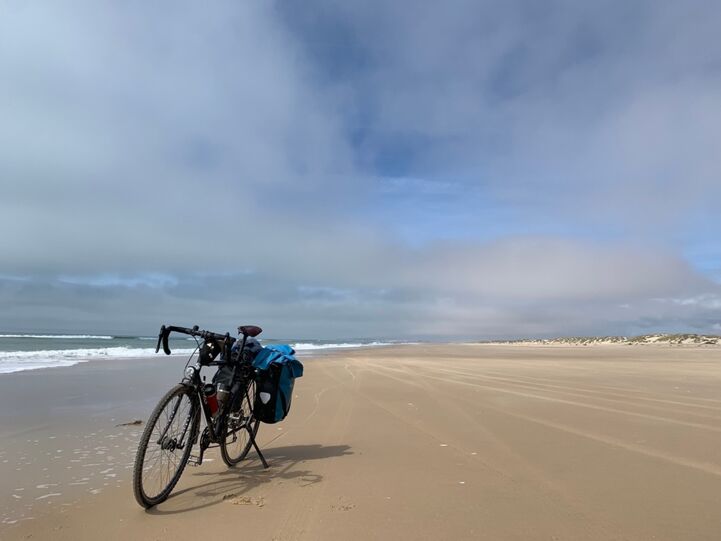
The second moment came in Huelva. I was exhausted after two weeks riding through Portugal. Early one morning, I arrived at a seemingly impossible hurdle. The only path forward was cut off abruptly by a narrow, busy bridge. As I stood by the side of the road, freight trucks kept blazing in and out of the deep morning fog. It was too dangerous to continue, so I sat down on a bench. The minutes passed by and all the time I knew that I would need to find courage to pass by, as there was a passage of 30 kilometers on the sand afterwards which is only ridable during ebb. I was on the verge of tears, feeling like my trip was coming to an end. With a restless feeling of desperation and frustration, I started to search for a train connection back to France.
As I was sitting there, suddenly a man came up to me and asked if he should take a picture of me with the statue. He pointed behind me, and I looked up at the huge monument of Columbus, his cross raised in front of him. Immediately, I was back to myself. With a new-found resolve to keep going towards my goals I approached a group of cyclists that passed by to ask for help. One of them explained how I could safely get across the bridge by lifting my bike over the traffic barrier. I arrived safely across, and with the tide approaching I pedaled faster that day than ever before over the sandy road. It was worth every bit of effort.
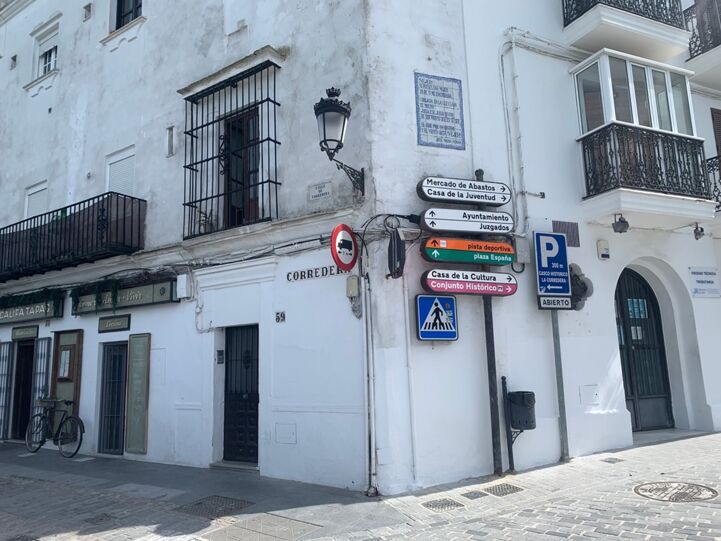
The third moment was after Vejer de la Frontera, right near Africa. The asphalt shimmered in the heat, and I had tire and shifting issues. I spent two days resting in this beautiful town on the mountain where I was warmly welcomed by a man I’d befriended earlier on the trip. We drank hot espresso and cold beers on the remarkable main square, the Plaza de España. When I finally got back on the road, I had a long, harsh stretch ahead, fifty kilometers in the blazing heat on the shadeless N-340. I regretted pushing myself so hard. But I refused to miss the opportunity to reach Africa. My pump (a companion for many a year) was suffering in the heat, and I was unable to inflate my tire. After a lot of prayers and with my hands black of oil, I somehow managed to reach the harbor to catch the ferryboat to Africa in the afternoon, feeling exhausted but proud.
Looking to the future
Now that I’m home, the trip feels like a distant memory. Looking at my GIS map, I see how much I’ve accomplished. The lines of my completed trips run throughout Europe from Saint-Naizaire to the Black Sea, from Hoek van Holland to Venezia and from Breslau to Tarifa. It’s amazing what can be achieved on a simple bicycle, in a relatively short time, with only the strength of one’s own body and mind. It’s equally satisfying to remember all the kind and helpful people you meet along the way. I know this is not the end. One day I’ll cycle through Sweden and Norway to the North Cape and make my way to Athens from Marseille.
Yet this last trip wasn’t just about miles; it was about the meetings with great human beings, unforgettable moments and personal growth. When changing trains in Paris, I paused for a moment in front of the town hall, the Hôtel de Ville. Watching the Olympic Games ads, I realised I didn’t need to be part of a special event or complete unheard feats. By simply continuing my journey, step by step, with faith and self-belief, I knew my actions would inspire others.
Looking ahead, I believe in the strength of people and the power of continuous momentum. One pedal stroke at a time.
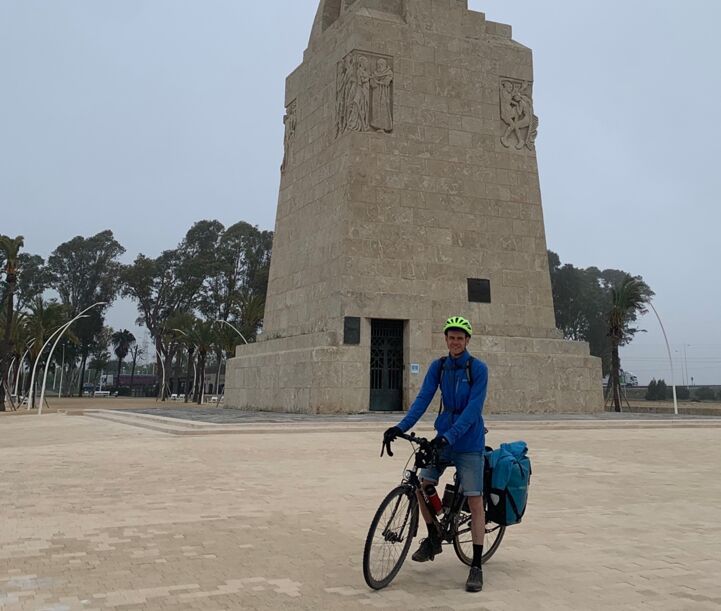
About the author
Julian Herzel enjoys travelling, writing, and cycling. Having visited 40 countries, the urban planner fondly remembers participating in Bogotá’s Ciclovía on a car-free Sunday and reaching the coasts of the Black Sea, Atlantic, North Sea and Mediterranean by bike. The availability of bike-sharing stations and protected bike lanes in cities like Cairo and Mexico City inspires him. More information and GPS tracks of his stages can be found on his website.